FOCUS: I-526 Extension is a huge boondoggle
COMMENTARY, Brack: When being last can do the nation some real good
IN THE SPOTLIGHT: Magnolia Plantation and Gardens
GOOD NEWS: Gammons named Charleston Bar’s first black president
FEEDBACK: Reform bill provides some optimism
MYSTERY PHOTO: Top of building shows wear and tear
S.C. ENCYCLOPEDIA: Union County
CALENDAR: Last-ever Junior League Whale of a Sale set for March 2
FOCUSFOCUS: I-526 Extension is a huge boondoggle
By Fred Palm, contributing editor | The S.C. Joint Bond Review Committee last week sent Charleston County’s funding application to extend Interstate 526 to a four-person subcommittee to provide the due diligence of the facts of the financing. Why? Because years of skittish details about the project just do not fly.
Core issue
 The basic problem that caused the delay by the Joint Bond Review Committee is found in the half-truths, equivocations, shell games, bait and switch, balderdash and peekaboo funding sources draped with inchoate statements about other displaced projects from the majority of Charleston County Council that backs the I-526 extension (I-526X). Through proposed no-see-em fiscal sleights of hand, the council’s Majority of Five offers to push through this incredibly expensive highway with zero contingency built off of a well-founded cost estimate because at its root, the extension is unjustifiable.
The basic problem that caused the delay by the Joint Bond Review Committee is found in the half-truths, equivocations, shell games, bait and switch, balderdash and peekaboo funding sources draped with inchoate statements about other displaced projects from the majority of Charleston County Council that backs the I-526 extension (I-526X). Through proposed no-see-em fiscal sleights of hand, the council’s Majority of Five offers to push through this incredibly expensive highway with zero contingency built off of a well-founded cost estimate because at its root, the extension is unjustifiable.
Risk, risky and even riskier when you dig
There is not any stable financing plan for fully building and completing the I-526X by 2030, including the many contingencies for the unknowns. A 30-year bond, normally used for major highway construction. is infeasible as the deal is structured because no rational lender would offer us money for 30 years when we lack a flood protection plan, from a community with its risky valuable real estate assets at the shore and floodplain to back it up. It is a roll of the dice for them.
Life has unknowns; Major Interstate highway financing should not
As currently envisioned, the allocation of the total unknown dollars for the I-526X project costs minus the $420 million that the project would get from the State Infrastructure Bank (SIB) yields an unknown bill of untold millions of dollars to county taxpayers. This is a big deal because it would be the most expensive highway built in our state. All of these unknowns are what financial risk looks like when left unaddressed. It is scary and ugly. Our I-526X financing plan is not even a fiction. Even a fiction has numbers; this one has not enough.
Charleston County taxpayers get 100 percent of the risk; the state gets 0 percent
With this project as it stands now, all Charleston County taxpayers take on the risks of the unknown: Bottomless inflation, tariffs, overrun expenses, delay costs, unidentified field conditions, legal fees, change orders and corruption — plus now-higher base interest and interest increases. Ignoring the flood risk or not developing suitable protection plans, concurrent with this highway decision, means the highway completion is further challenged.
Profile in courage needed
The Joint Bond Review subcommittee now charged with reviewing this project hopefully will see through this fakery deserving of a loud public censure of the Charleston County Majority of Five. We in Charleston look to the only local person on the newly-appointed committee of state legislators, our state Rep. Leon Stavrinakis. The Charleston County Majority of Five have dealt him a lousy hand to play because our council failed to address the financing of I-526X responsibly and honestly.
Stavrinakis can choose the more general welfare and common good of all Charleston County taxpayers. Here is his challenge. Stavrinakis can step up to the big plate of all of Charleston County’s taxpayers and act in their interest. That will take incredible courage of historic proportions. Or he can choose the little plate to serve the narrow confines of his elected constituency, requiring only complicity. My money is on the integrity and courage of Representative Stavrinakis.
Plan out to 2030
Responsible stewardship of our tax dollars requires that County Council must develop realistic projections of inflows and outflows for its entire capital program to 2030 that includes mass transit, flood protections (that will take decades) and the massive I-526X project that is the most expensive highway ever built in South Carolina, the bulk paid for by a county of only 200,000 households. Saddle the county taxpayers with big overruns charges and watch those appraised values of our real estate tumble faster than a Charleston hurricane evacuation.
Bottom line
For a moment, we avoided the hallmark of yet another historical, societal and policy blunder of our governance likely to be called the Highway to Ruin. All taxpayers have the right to expect honest services from all of their elected officials acting singly or in a body and that is the best outcome for our common good, difficult as it will be here.
Time and tide wait not.
Fred Palm of Edisto Island is a retired professor of oversight and investigations at the John Jay College School of Public Management and a former executive director of the Association of Inspectors General. He writes about the Common Good.
- Have a comment? Send to: editor@charlestoncurrents.com
BRACK: When being last can do the nation some real good
By Andy Brack, editor and publisher | Here’s a way that by being last, South Carolina lawmakers could do something really good: Pass the Equal Rights Amendment. Only one more state legislature has to approve it for it to become part of our nation’s basic protections.
 You might have forgotten about the amendment, first approved by Congress in 1972, following the rise of the women’s movement in the 1960s. After approval, the amendment went to the states for ratification. Thirty-eight states are needed for ratification.
You might have forgotten about the amendment, first approved by Congress in 1972, following the rise of the women’s movement in the 1960s. After approval, the amendment went to the states for ratification. Thirty-eight states are needed for ratification.
Right out of the gate, states forged ahead with Hawaii approving on the same day as the final congressional vote. In 1972, 28 states of the 38 needed to ratify approved the amendment. It looked like it was on its way.
But when conservative organizer Phyllis Schlafly started a “Stop ERA” movement that year, things slowed down. Schlafly argued that the ERA, rather than guarantee equal protection for women under law, would create problems for them receiving Social Security, alimony and other benefits. While those arguments were batted down over time, they took the steam out of the ratification push.
By 1979 when a congressionally-imposed deadline approached, three states were needed for final approval. Legal wrangling over the deadline ensued with the judicial branch essentially leaving it to Congress whether to adhere to a deadline or ignore it. By the dawn of the 21st century, the ERA was mostly a distant memory.
Then came the #MeToo movement, pink knitted hats and women’s marches on government institutions after the 2016 presidential election. On March 22, 2017, the 45th anniversary of congressional approval, the Nevada legislature approved the amendment, followed by Illinois a year later. Nevada lawmakers moved forward after being counseled “if three more states sent their ratification to the appropriate federal official, it would then be up to Congress to determine whether a sufficient number of states have ratified the Equal Rights Amendment.”
State Rep. Gilda Cobb-Hunter, D-Orangeburg, hopes the final state to ratify the ERA is South Carolina. She and State Rep. Leon Stavrinakis, D-Charleston, separately pre-filed ratification bills in December. Both measures have bipartisan support, most critically that of House Judiciary Committee Chair Peter McCoy, R-Charleston.
Cobb-Hunter said while there have been advances for women since 1972 throughout society, the ERA is needed “because first and foremost, it’s the right thing to do. Women deserve equal protection under the law. We [in South Carolina] are known for so many negative things. It would be neat if we were known for something that guarantees rights, given our sordid civil rights history.”
She added that federal protection for equal rights would protect women across state lines because state laws aren’t always similar. Constitutional protection would provide an avenue to ensure fair treatment.
State Rep. Nancy Mace, R-Berkeley, isn’t convinced the ERA is needed, citing some of the same arguments Schlafly used five years before Mace was born.
“I believe women already have equal rights as protected under the 14th Amendment,” Mace said. “This legislation also doesn’t take into consideration some of the collateral damage it might have.” She listed concerns about women not receiving Social Security benefits, alimony, child support, for example.
Not true, said Jennet Robinson Alterman, chair of the city of Charleston’s Commission on Women. Earlier this month, the commission proposed a pro-ERA resolution approved unanimously by Charleston City Council.
“Wives and widows already receive Social Security,” she said. “Child support is based on ‘best interests of the child.’ Alimony is based on the earnings and assets of both spouses Many women currently pay alimony to the ex-husbands.”
 Alterman told council members it is time for the ERA to be approved.
Alterman told council members it is time for the ERA to be approved.
“We believe that women deserve full and equal rights in the U.S. Constitution,” she said. “The only right guaranteed for women in the Constitution is the right to vote.” And she reminded council members of the words of conservative jurist Antonin Scalia in 2011: “Certainly the Constitution does not require discrimination on the basis of sex. The only issue is whether it prohibits it. It doesn’t.”
Let’s expand legal protections for women. And let’s encourage lawmakers to have the Palmetto State become the 38th state to approve the measure and push it over the goal line.
- Have a comment? Send to: editor@charlestoncurrents.com
SPOTLIGHT: Magnolia Plantation and Gardens
 The public spiritedness of our underwriters allows us to bring Charleston Currents to you at no cost. Today we shine our spotlight on Magnolia Plantation and Gardens, founded in 1676 by the Drayton family. It has survived the centuries and witnessed the history of our nation unfold before it from the American Revolution through the Civil War and beyond. It is the oldest public tourist site in the Lowcountry and the oldest public gardens in America, opening its doors to visitors in 1870. Open 365 days a year, Magnolia offers its visitors splendid tours of nature and history and the role African-Americans played in the development of its award-winning Romantic-style gardens.
The public spiritedness of our underwriters allows us to bring Charleston Currents to you at no cost. Today we shine our spotlight on Magnolia Plantation and Gardens, founded in 1676 by the Drayton family. It has survived the centuries and witnessed the history of our nation unfold before it from the American Revolution through the Civil War and beyond. It is the oldest public tourist site in the Lowcountry and the oldest public gardens in America, opening its doors to visitors in 1870. Open 365 days a year, Magnolia offers its visitors splendid tours of nature and history and the role African-Americans played in the development of its award-winning Romantic-style gardens.
- Visit www.magnoliaplantation.com to learn how you can experience a complete plantation experience.
- Click here to learn about events and what’s new.
- To meet all of our underwriters, click here.
GOOD NEWS: Gammons named Charleston Bar’s first black president
Staff reports | Debra J. Gammons, who directs diversity efforts at the Charleston School of Law, today will become the county’s first black president of the Charleston County Bar Association.
“I am looking forward to continuing my work for equality, education and engagement,” said Gammons, a distinguished visiting professor and director of the Office of Diversity Initiatives at the law school. “I am looking forward to working with attorneys at the school and throughout the community to bring about positive changes here, across the state and across the country.”
Gammons, the sixth woman to head the nonprofit association, will succeed Charleston City Council member and local attorney Peter Shahid, who served as the Bar president from 2018-19.
“We are incredibly proud of Debra and excited for the Charleston County Bar and for our community,” said Dean Andy Abrams. “Since her earliest days at the College of Charleston where she was the first black and first woman to serve as president of the student body to today, Debra has led a life of service. She is a both a passionate advocate and compassionate leader, and exemplifies the motto of the Charleston School of Law—pro bono populi—for the good of people.”
Gammons, who received a law degree from the University of South Carolina School of law, joined the Charleston School of Law in 2009 after serving as assistant city attorney for Greenville for 11 years. She also has served as an assistant solicitor and has had a private legal practice in cases involving medical malpractice, personal injury, child custody, divorce and criminal defense. In addition to overseeing diversity initiatives at the law school, she has taught criminal law, constitutional law, trial advocacy, and sex and gender issues and the law.
Her term as president of the Bar will last through February 2020.
In other Good News:
![]() Reopening. The Children’s Museum of the Lowcountry will reopen 9 a.m. March 2 after an eight-week, $550,000 renovation. According to an email from the museum, “visitors will notice that the bathrooms have been made-over and the ceiling has been encapsulated. The shed in the museum’s backyard was removed and new HVAC systems have been installed throughout the building. Roof and door repairs were also completed during this time.” The museum’s temporary, pop-up location in Citadel Mall will close 5 p.m. Feb. 26. More info: ExploreCML.org.
Reopening. The Children’s Museum of the Lowcountry will reopen 9 a.m. March 2 after an eight-week, $550,000 renovation. According to an email from the museum, “visitors will notice that the bathrooms have been made-over and the ceiling has been encapsulated. The shed in the museum’s backyard was removed and new HVAC systems have been installed throughout the building. Roof and door repairs were also completed during this time.” The museum’s temporary, pop-up location in Citadel Mall will close 5 p.m. Feb. 26. More info: ExploreCML.org.
New hospital. MUSC will build and operate a new $50 million hospital to replace hospitals in Lake City and Williamsburg County, according to a news release. “The new hospital will be a 25-bed critical access facility, providing care through traditional on-site delivery as well as through virtual visits via the extensive MUSC Telehealth Network.” More: muschealth.org.
Big read. Charleston County Public Library (CCPL) is joining the nation in celebrating the National Education Association’s 21st annual Read Across America event. Several library branches will host celebrity readers during events scheduled Feb. 28, and March 1, 4 and 5. Read Across America celebrates Dr. Seuss’ birthday and the joy of reading. More than 45 million readers of all ages are expected to pick up a book and read during associated events held nationwide March 2. Check out the schedule of CCPL events here, and get ready to enjoy listening to Dr. Seuss favorites as we celebrate his birthday with local celebrities.
Big SEWE year. Preliminary reports from the Southeastern Wildlife Exposition “ indicate that 2019 numbers are up across the board, surpassing last year’s record-high attendance and sales. With an estimated 45,000+ attendees, SEWE experienced a 5 percent increase in advanced online and weekend ticket sales, 30 percent increase in food and beverage sales and a 6 percent increase in weekend art sales. Event organizers expect residual art sales to continue over the next few weeks,” according to a press release.
Grow local. Lowcountry Local First has announced a new initiative aimed towards the nonprofit organization’s mission to cultivate an economy anchored in local ownership, Good Enterprises, joining the established Good Business and Good Farming initiatives. Good Enterprises will be a catalyst for reshaping the region’s entrepreneurial ecosystem to one that provides equitable opportunity for business ownership, in order to transform lives and communities. Read more.
Green businesses. The City of Charleston is launching the 2019 Charleston Green Business Challenge with a workshop series beginning this month. Mayor John Tecklenburg will announce the official kickoff 1:30 p.m. Feb. 28 in the first floor public meeting room at 2 George Street. Immediately following the announcement, the first workshop will begin. Hosted by the division of Business and Neighborhood Services, the workshops will cover a range of topics from energy consumption to sustainable alternatives and lowering environmental impacts from commuters to water conservation. The focus will be to provide participating businesses with the knowledge and tools they need to succeed in lowering their energy costs and creating more environmentally sustainable facilities. RSVP.
FEEDBACKFEEDBACK: Reform bill provides some optimism
To the editor:
![]() Mr. [Jay] Lucas pending [education reform] bill provides a measure of optimism that finally the S.C. legislature will be addressing our state’s failing education system in a meaningful way. [Brack column, 2/18]
Mr. [Jay] Lucas pending [education reform] bill provides a measure of optimism that finally the S.C. legislature will be addressing our state’s failing education system in a meaningful way. [Brack column, 2/18]
One component of the overall problem according to many analyses of the problem is the failure of parents to “get involved” in their children’s education. The resulting conundrum for society, however, is how do we as a society make parents better parents? Challenging though that question might be, no package of solutions will be complete until we include that issue in our discussion.
Let us hope that they do so.
— David Brown, Daniel Island, S.C.
Thanks for recap of MLK’s principles
To the editor:
I wanted to thank you for publishing your father’s recap of MLK’s philosophy in regard to nonviolence and his suggested steps in achieving change.
As I read those six steps, it became very clear to me, as a member of Charleston Area Justice Ministry that those are exactly the same steps in our process as we attempt to promote equity and justice in our community…with our research resulting in dialogue with public officials regarding specific issues and then requesting a commitment to positive change.
When I first became involved with CAJM six years ago, the protocol used and the tension it caused was upsetting; however, gradually I have seen the results of this fine-tuned process and I have great appreciation for our hard working leaders.
There are a number of areas that have been improved because of efforts of CAJM including the following: addition of preschool slots in Charleston school district; positive behavior intervention and restorative practices introduced into the schools by the district; creation of a required police risk assessment for juvenile delinquents; legal help for wage theft cases; racial bias audit of Charleston police (finally in progress); creation of affordable housing trust fund which is still in process; and currently, research work on how to improve public transportation locally, especially for low income workers, bus riders, bikers, pedestrians and rural residents.
Though CAJM is an acronym for Charleston Area Justice Ministry and there are many area churches involved, you need not belong to any church or specific denomination to become a member; everyone is welcome to participate. I would like to personally invite you to save the date and attend our next annual action meeting to be held on Monday, May 6, at 7 p.m. (location TBA).
— Freida McDuffie, Charleston.
Tell us what you think
We’d love to get your impact in one or more ways:
Send us a letter: We love hearing from readers. Comments are limited to 250 words or less. Please include your name and contact information. Send your letters to: editor@charlestoncurrents.com. | Read our feedback policy.
Tell us what you love about the Lowcountry. Send a short comment – 100 words to 150 words – that describes something you really enjoy about the Lowcountry. It can be big or small. It can be a place, a thing or something you see. It might the bakery where you get a morning croissant or a business or government entity doing a good job. We’ll highlight your entry in a coming issue of Charleston Currents. We look forward to hearing from you.
MYSTERYMYSTERY: Top of building shows wear and tear
Today’s mystery could be kind of tough. A reader sent along this shot, accompanied by a good story. The photo is in South Carolina, but that’s the only hint you’ll get. Send your guess to: editor@charlestoncurrents.com. And don’t forget to include your name and the town in which you live.
Our previous Mystery Photo
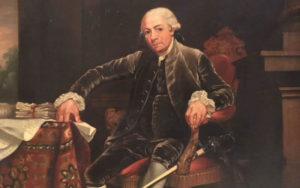 Our previous mystery, “Who’s this old guy?,” was a Charles Fraser painting of South Carolina’s Henry Laurens that is on display at the Gibbes Museum of Art in Charleston.
Our previous mystery, “Who’s this old guy?,” was a Charles Fraser painting of South Carolina’s Henry Laurens that is on display at the Gibbes Museum of Art in Charleston.
Laurens (1724-92), a South Carolinian who served as president of the Second Continental Congress, was the only patriot to have been imprisoned in the Tower of London during the Revolutionary War, writes Dale Rhodes of Richmond, Va.
Sleuth George Graf correctly identified the painting as being Laurens, but said the artist was John Singleton Copley. According to the Gibbes, its painting of Laurens is an example of an artist copying an artist. It said that Fraser likely never saw the original, but created his version from an engraving.
Laurens was one of the richest man in the colonies due to the slave trade, Graf shared. His firm, Austin & Laurens sold about 7,800 African men, women and children between 1751 and 1761, according to various sources. “Laurens was exchanged after the Battle of Yorktown for General Charles Cornwallis. Shortly thereafter he was instructed to join Benjamin Franklin, John Jay, and John Adams as a member of the peace commission.”
Cheryl Smithem of Summerville added, citing the Smithsonian, “Laurens arrived in Paris just two days before the preliminary treaty bringing the Revolutionary War to a close was signed on November 30, 1782. He inserted a line in the treaty to prevent the British army from “carrying away any Negroes or other property.” During the war, the British had destabilized the South by promising to liberate slaves who fled from their masters; many did so, and this clause was intended to restore those slaves to their masters.”
Others who correctly identified Laurens were Chris Brooks and Joan Zaleski, both of Mount Pleasant; Marnie Huger of Richmond, Va.; and Bud Ferillo of Columbia. Congratulations all!
- Send us a mystery: If you have a photo that you believe will stump readers, send it along (but make sure to tell us what it is because it may stump us too!) Send it along to editor@charlestoncurrents.com.
HISTORY: Union County
S.C. Encyclopedia | A Union County of 540 square miles was created by the state legislature in 1785. A century later, in 1897, the county lost its two northernmost townships in the creation of Cherokee County, reducing Union County to 514 square miles and establishing its modern boundaries. Probably the first white settlers in the area were James McIlwaine and a party of Scots-Irish Protestants who arrived from Virginia and Pennsylvania about 1751. Others followed and were soon joined by large numbers of Quakers. Baptists were also among the early settlers, and an entire congregation settled on lower Fairforest Creek around 1760. To save effort, inhabitants of various denominations in the Brown’s Creek area built a common house of worship and called it a “union” church. The generic name became a given name, and in 1785 Union County was named in honor of that early church.
During the Revolutionary War residents were active on both sides of the conflict and a civil war raged in what was to become Union County, while the pacifist Quakers hunkered down and rode out the storm as best they could. Probably no other county in South Carolina was as evenly divided between Tories and patriots as Union County was. At least five Revolutionary War battles occurred within or exactly on the later boundaries of the county. The most important battle took place at Blackstock’s on November 20, 1780, when state militiamen under Thomas Sumter defeated a British force commanded by the notorious Banastre Tarleton.
After the return of peace and the creation of the actual county, a log courthouse and a log jail were built in 1786. Space for the public buildings had been donated by the county’s greatest Revolutionary War hero, Colonel Thomas Brandon. In May 1788 Brandon also led Union County representatives at the state’s ratification convention, where the entire delegation opposed adoption of the new national Constitution.
Cotton became king soon after 1800, and large plantations appeared in the fertile southern parts of Union County, where numerous slaves worked under the eyes of the overseers. Area Quakers felt uncomfortable with this sudden increase in the slave population and abandoned Union in the first decade of the nineteenth century, resettling north of the Ohio River, primarily in southwestern Ohio. Poor soil conservation practices left fields eroded and red by the 1830s, sparking a second exodus from the county as people left for new lands in the Southwest. Although many emigrants took their slaves with them, established plantations grew larger as the slave population increased and the white population declined. Slaves became a majority in the county in the 1840s, and blacks continued to outnumber whites until about 1915. Efforts were made to restore prosperity to the county in the 1850s. In 1858 John L. Young, a local merchant and railroad entrepreneur, succeeded in linking Union to the outside world with a railroad, the Spartanburg and Union. The following year he pushed the line to Spartanburg, which remained the terminus of the line until after the Civil War.
In 1860 the governor of South Carolina was William H. Gist of Union. On October 5, 1860, Gist dispatched his Union County first cousin, States Rights Gist, as special envoy to the governors of other southern states to sound them out on the question of secession. When States Rights sent back letters assuring the governor that the Deep South would follow a secession move by South Carolina, Gist called a special session of the legislature to convene on November 5, the day before it was expected that Lincoln would be elected. When their worst fear was realized, the legislators voted to call a state convention. That convention on December 20, 1860, unanimously signed the Ordinance of Secession, an instrument written in the hand of convention secretary Benjamin F. Arthur of Union. Many Union County men fought in the Confederate army, and after the war they were especially active in resisting what they considered to be the tyranny of Reconstruction. The Union County Ku Klux Klan was among the most active in the state, and in February 1871 the county was the scene of the largest KKK raid that ever occurred in the South. “Carpetbag” rule was ended in the county in 1872, four years before the Democratic “redemption” of 1876 brought Reconstruction to an end in the state as a whole.
Trapped in postwar poverty, most Union County residents, black and white, were small cotton farmers or sharecroppers in the late nineteenth century. Not until 1893 did a measure of prosperity return in the form of cotton mills. Thomas Cary Duncan was the county’s preeminent industrialist, and his Union Cotton Mill was the first in the county to go into production. Lockhart Mill and others soon followed, and by 1907 some 4,075 workers were tending 7,645 looms and 285,800 spindles in the county. In an era of segregation African Americans were not employed inside the mills, and whites from the North Carolina mountains filled many mill jobs. During the period between the world wars, many blacks left the county and migrated north in search of better lives.
Following World War II, Union County entered a second phase of industrial development and by the 1990s possessed metal working plants, such as those operated by Torrington and Webb Forging, although most manufacturing remained textile-related. Cotton growing declined after the 1920s and all but disappeared by the 1970s, being replaced by forestry, cattle raising, and soybean farming. With the return of forests, deer reappeared in the 1960s and eventually drove out soybeans, which were regarded as a delicacy. At the end of the twentieth century the taking of deer by both local and out-of-county hunters had become an industry in itself, and deer coolers (to process the meat) and hunt camps sprang up all over the county. Throughout the twentieth century, economic growth balanced with economic difficulties, and thus the county’s population remained almost exactly the same for some ninety years, hovering just above the thirty-thousand level. Despite changes, history remained a real presence in the county, with many Union inhabitants descended from longtime residents.
— Excerpted from an entry by Allan D. Charles. This entry may not have been updated since 2006. To read more about this or 2,000 other entries about South Carolina, check out The South Carolina Encyclopedia, published in 2006 by USC Press. (Information used by permission.)
ON THE CALENDARCALENDAR: Last-ever Junior League Whale of a Sale set for March 2
Staff reports | The 45thAnnual Whale of a Sale, Charleston’s largest garage sale and a fundraiser for the Junior League of Charleston (JLC), will be held 8 a.m. to 1 p.m. March 2 at Pine Point Shopping Plaza, 1964 Ashley River Rd.. The event is free and open to the public. A preview party, also open to the public, will be held the evening prior from 6 p.m. to 9 p.m. Tickets are $45 per person and available online at www.jlcharleston.org/whale.
 “We have a wonderful variety of treasures this year,” said JLC President Beth Bailey. “This will be the final year of this much-anticipated Charleston tradition, and we’re sunsetting the Whale with a big splash. We have solicited everything from refrigerators to linens, clothing to small appliances, home accessories to furniture – just about anything someone could need can be found at the sale. We’re determined to make this one of the biggest Whales ever.”
“We have a wonderful variety of treasures this year,” said JLC President Beth Bailey. “This will be the final year of this much-anticipated Charleston tradition, and we’re sunsetting the Whale with a big splash. We have solicited everything from refrigerators to linens, clothing to small appliances, home accessories to furniture – just about anything someone could need can be found at the sale. We’re determined to make this one of the biggest Whales ever.”
Bailey noted that escalating venue rental rates and competition from online sites like eBay and Craigslist have contributed to the decision to discontinue the event.
“We’re so proud of the Whale. In the event’s 45 years, the JLC has raised over $1 million for community projects like the Saturday Soup Kitchen, Dee Norton Child Advocacy Center – both started by the JLC – and myriad other non-profits,” said Bailey. “Next year and beyond, we will continue to support community projects through new opportunities and our other fundraisers, such as the Bridal Boutique, the Little Black Dress Initiative and through sales from JLC products.”
Also on the calendar:
Events at the Gaillard. Check out these awesome coming events at the Charleston Gaillard Center, 95 Calhoun St., Charleston:
Feb. 26, 27, 7:30 p.m.: Alvin Ailey American Dance Theater.
March 1,2, 7:30 p.m.: Romeo and Juliet with violinist Robyn Bollinger and the Charleston Symphony Orchestra.
March 4, 8 p.m.: Joe Bonamassa
March 8, 7 p.m.: Black Violin
March 9, 2 p.m.; March 10, 5:30 p.m.: American Girl Live
March 14, 7:30 p.m.: Masquerade with Dimitri Pittas, Leah Edwards and the Charleston Symphony Orchestra
McLeod by Night: 6:30 p.m. to 7:45 p.m., March 1, McLeod Plantation Historic Site, James Island. For enslaved residents, night was time for burials, worship, family visits, or an opportunity to seize freedom. Tour McLeod after dark to discover how they commandeered the night and the risks they took doing so. Fee: $15 admission. More: www.charlestoncountyparks.com
Great book sale: Starting at 9 a.m. March 1 and 2, Otranto Regional Library, 2261 Otranto Road, North Charleston. The Charleston Friends of the Library offers another great book sale with paperbacks for $1 and hardbacks for $3. Last year, the said raised nearly $8,000 and welcomed hundreds of people through the doors. More: CharlestonLibraryFriends.org
Commissioning of USS Charleston: 10 a.m., March 2, Columbus Street Terminal. Charleston. A commissioning ceremony for the new USS Charleston (LCS 18), an Independence-class littoral combat ship, requires anyone who wishes to attend to register this month and soon through the Navy League of Charleston. The registration period has expired. However, you can watch online here. More info.
Steel Magnolias: 12 shows, March 6 to March 24, Dock Street Theater, 135 Church St., Charleston. Charleston Stage will present Steel Magnolias, one of the most produced comedies in America, for three weeks with resident actors to the delight of area audiences. Truvy, Ouiser, Clairee, M’Lynn, Annelle, and Shelby have gathered once again at Truvy’s Beauty Parlor to primp, gossip, and spar with one another. As hair is teased, blow-dried, and permed, the comic sparks fly in this hilarious and beloved classic Southern comedy. Tickets available online 24/7 at www.charlestonstage.com. Or by calling (843) 577-7183.
Medway Movie Night: 5:30 p.m. to 8:30 p.m., March 8, Medway Park and Community Garden, 2069 Medway Road, James Island. The Charleston Park Conservancy will offer a free movie, “A Bug’s Life” at dark with food trucks offering food for purchase. More.
The Reckoning in the Park: 2 p.m. and 4 p.m. sets, March 10, Dog Park, James Island County Park, James Island. Bring your favorite furry friend to the dog park to enjoy live music from local Grateful Dead cover band, The Reckoning! Fee: $2 park entrance. More: www.charlestoncountyparks.com
Great jazz: 7:30 p.m., March 11, Recital Hall, Simons Center for the Arts, 54 St. Philip St., Charleston. The 2nd Monday Series at the College of Charleston School of the Arts will present the CofC Faculty Jazz Ensemble: Robert Lewis (saxophones), David Heywood (flute), Tyler Ross (guitar), Gerald Gregory (piano), Quentin Baxter (drums) and Frank Duvall (bass). The group will perform jazz standards, arrangements and originals. Directed by Robert Lewis, Jazz Studies in the College’s Department of Music is one of the most prominent music programs in the area and includes instruction by some of the best jazz performers of the South. Admission is $15 general / $10 students. More information is available at music.cofc.edu/concerts/2nd-Monday-series.
Early morning bird walks at Caw Caw: 8:30 a.m. every Wednesday and Saturday, Caw Caw Interpretive Center, Ravenel. You can learn about habitats and birds, butterflies and other organisms in this two-hour session. Registration not required, but participants are to be 15 and up. $10 per person or free to Gold Pass holders. More: http://www.CharlestonCountyParks.com.
AREA FARMERS MARKETS
SATURDAYS: Johns Island Farmers Market operates each Saturday from 9:30 a.m. to 1:30 p.m. year-round with more than 50 local farmers and vendors, food trucks, music and more. The market is located on the campus of Charleston Collegiate School, 2024 Academy Road, Johns Island.
- If you have an event to list on our calendar, please send it to feedback@charlestoncurrents.com for consideration. The calendar is updated weekly on Mondays.
If you like what you’ve been reading, how about considering a contribution so that we can continue to providing you with good news about Charleston and the Lowcountry. Interested? Just click the image below.
ABOUT CHARLESTON CURRENTSOUR UNDERWRITERS
Charleston Currents is an underwriter-supported weekly online journal of good news about the Charleston area and Lowcountry of South Carolina.
- Meet our underwriters
- To learn more about how your organization or business can benefit, click here to contact us. Or give us a holler on the phone at: 843.670.3996.
OUR TEAM
Charleston Currents offers insightful community comment and good news on events each week. It cuts through the information clutter to offer the best of what’s happening locally.
- Mailing address: O. Box. 22261 | Charleston, SC 29413
- Phone: 670.3996
Charleston Currents is provided to you weekly by:
- Editor and publisher: Andy Brack, 843.670.3996
- Contributing editor, common good, Fred Palm
- Contributing editor, money: Kyra Morris
- Contributing editor, Palmetto Poem: Marjory Wentworth
- Contributing editor, real estate: Digit Matheny
SUBSCRIBE FOR FREE
Subscriptions to Charleston Currents are free.
- Click here to subscribe.
- We don’t want to lose you as a reader of Charleston Currents, but if you must unsubscribe, you will have to do it through the email edition you receive. Just go to the bottom of any of your weekly newsletters and click the “unsubscribe” function. If that doesn’t work, please send us an email with the word “unsubscribe” in the subject line.
© 2008-2019, Statehouse Report, LLC. All rights reserved. Charleston Currents is published every Monday by Statehouse Report LLC, PO Box 22261, Charleston, SC 29413.


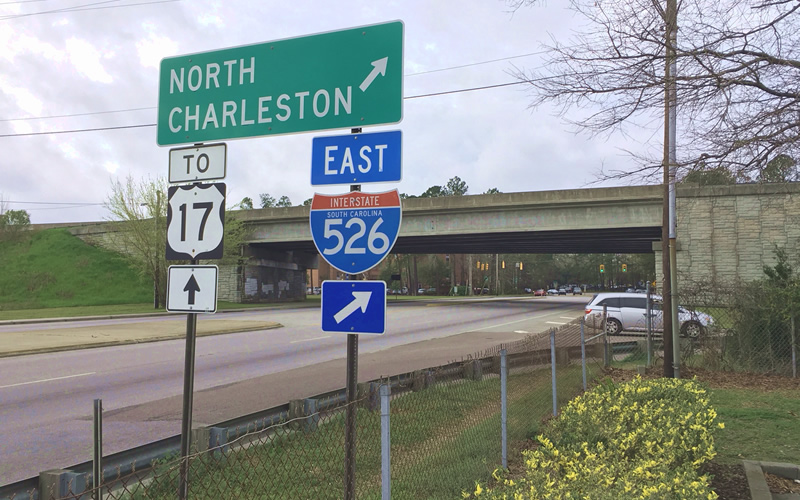

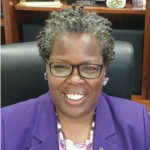
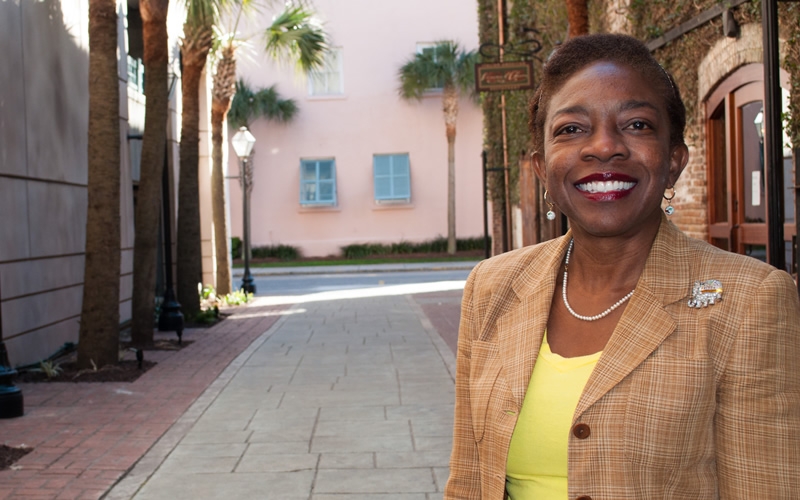
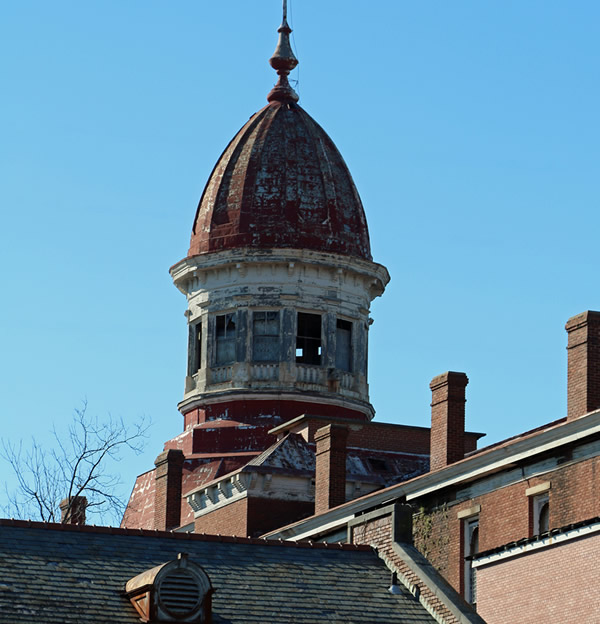
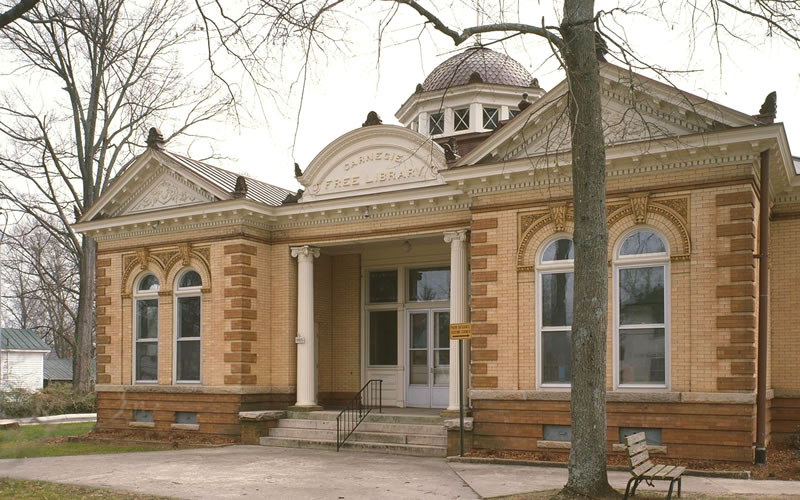

 We Can Do Better, South Carolina!
We Can Do Better, South Carolina!
























